.
23.10.2015
WT1190F comes back: ESA NEOCC watching rare reentry
-
An object discovered on 3 October 2015, temporarily designated WT1190F by the observers, will enter the Earth's atmosphere on 13 November. It was discovered by the Catalina Sky Survey
.
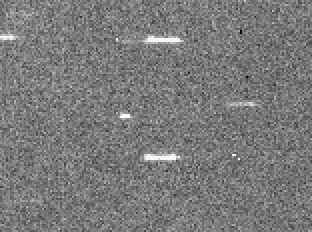
WT1190F observed on 9 October 2015 with the University of Hawaii 2.2 meter telescope on Mauna Kea, Hawaii. [Credits: B. Bolin, R. Jedicke, M. Micheli]
The object is in Earth orbit, with a period of about three weeks. Its orbit is quite well known because it was also observed twice in 2013 by the same survey team. This long observational coverage is sufficient to model its trajectory with good accuracy and obtain two interesting results.
First, the object is likely man made. The motion of this body over about two years can be modelled in detail only if the effects of solar radiation pressure are taken into account. The intensity of this solar push is proportional to the object's area-to-mass ratio, which can therefore be estimated, providing an indirect clue to its density. It turns out that this body has a mean density that is about 10% that of water. This is too low to be a natural space rock, but it is compatible with being a hollow shell, such as the spent upper stage of a rocket.
The second, and even more interesting result, is that the object will re-enter Earth's atmosphere in a few weeks, around 06:20 UT on 13 November 2015. The object is quite small, at most a couple of meters in diameter, and a significant fraction if not all of it can be expected to completely burn up in the atmosphere. Whatever is left will fall into the ocean about 100 km off the southern coast of Sri Lanka. Its mass is not sufficient to cause any threat to the area, but the show will still be spectacular, since for a few seconds the object will become quite bright in the noon sky.
During the next few weeks ESA's NEOCC will organize observational campaigns to collect as much data as possible on this object. The goal is twofold; first, the object is interesting to better understand the re-entry of satellites and debris from high orbits. Second, it provides us with an ideal opportunity to test our readiness for any possible future events involving an asteroid, since the components of this scenario, from discovery to impact, are all very similar.
Quelle: ESA
.
Update: 28.10.2015
.
WIEDEREINTRITTSDATEN HELFEN, VORHERSAGEMODELLE ZU VERBESSERN
Nächsten Monat wird es zu einem seltenen Wiedereintritt kommen: Ein Himmelskörper, vermutlich ein Raketenrumpf, wird aus einer sehr hohen Umlaufbahn in die Erdatmosphäre eintreten. Dieses Ereignis ist eine hervorragende Gelegenheit, Daten zu erheben, um besser zu verstehen, wie Objekte mit der Erdatmosphäre interagieren.
Der Wiedereintritt des vermutlichen Raketenrumpfes wird für den 13. November erwartet und wird keine Gefahr für die Allgemeinheit darstellen. Für Wissenschaftler ist er überaus interessant, könnte er doch dabei helfen, ihre Kenntnisse darüber zu erweitern, wie Objekte, ganz gleich ob natürlichen oder menschengemachten Ursprungs, mit der Erdatmosphäre wechselwirken.
Das Beobachten und Analysieren des Wiedereintritts wird dazu beitragen, Orbitalmodelle und Programme zur Vorhersage von Wiedereintritten zu verbessern. Davon profitieren Wissenschaftler, die erdnahe Objekte (englisch: near-Earth objects, NEOs), etwa natürliche Asteroiden, oder den Verfall von künstlichen Objekten, zum Beispiel Satelliten, im Orbit erforschen.
Das Objekt wurde 2013 vom Projekt Catalina Sky Survey entdeckt und seitdem mehrmals vom selben Team beobachtet. Die dabei gesammelten Daten wurden auch dem Minor Planet Centre (MPC) in den USA sowie der Internationalen Astronomischen Union zur Verfügung gestellt.
Experten vom NEO-Koordinierungszentrum der ESA (NEOCC) im ESRIN, Italien, haben bestätigt, dass es sich bei dem Objekt WT1190F vermutlich um einen Raketenrumpf handelt. Es umrundet die Erde innerhalb von drei Wochen in einer exzentrischen, das heißt nicht-runden, Umlaufbahn.
ESA Space Situational Awareness programme: detecting space hazards
Das SSA-Programm der ESA trägt dazu bei, Gefahren aus dem All frühzeitig zu erkennen.
„NEO-Fachleute haben mit den bei den Beobachtungen gewonnenen Informationen die Dichte des Objektes abgeschätzt. Das Ergebnis: Seine Dichte ist wesentlich geringer als die des festen Felsmaterials, aus dem viele Asteroiden bestehen“, sagt Detlef Koschny, Verantwortlicher für NEO-Aktivitäten beim ESA-Programm Space Situational Awareness (SSA).
„In der Tat passt diese Dichte zu der Annahme, dass dieses Objekt hohl ist. Es könnte zum Beispiel der ausgebrannte obere Teil einer Rakete oder ein Teil einer Raketenstufe sein.“
Das Objekt soll in einigen Wochen wieder in die Erdatmosphäre eintreten, am 13. November 2015 um etwa 06:19 GMT (11:49 Ortszeit; 07:19 CET).
„Das Objekt ist relativ klein, misst höchstens einige Meter im Durchmesser. Wir gehen davon aus, dass ein großer Teil, wenn nicht gar alles, in der Atmosphäre verbrennen wird“, sagt Tim Flohrer vom ESA-Büro für Weltraumschrott am Europäischen Raumflugkontrollzentrum (ESOC) in Darmstadt.
Die Überreste sollen dann etwa 100 Kilometer vor der Südküste Sri Lankas in den Ozean fallen. Das Objekt ist zu klein, um eine Gefahr darzustellen, aber es wird spektakulär sein, es zu beobachten, da es einige Sekunden lang recht grell am Mittagshimmel aufleuchten wird.
Laut Tim Flohrer handelt es sich hierbei um ein recht besonderes Objekt, da es wahrscheinlich menschengemacht ist, aber vom NEO-Überwachungssystem entdeckt wurde. Darüber hinaus ähnelt der Orbit des Objektes in vielerlei Hinsicht dem eines NEOs.
Dadurch können die ESA-Experten den Zeitpunkt und die Stelle des Aufpralls ziemlich genau und vor allem lange im Voraus vorhersagen. Für wieder in die Erdatmosphäre eintretenden Weltraumschrott ist das normalerweise nicht möglich.
In den nächsten Wochen wird das NEOCC mehrere Beobachtungen durchführen, um so viele Objektinformationen wie möglich zu sammeln, erklärt Marco Micheli, Astronom beim NEOCC.
„Erstens wollen wir unser Wissen über den Wiedereintritt von Satelliten und Weltraumschrott aus hohen, exzentrischen Umlaufbahnen verbessern“, so Micheli weiter.
„Zweitens ist das Objekt eine ideale Möglichkeit für uns, unsere Bereitschaft für etwaige zukünftige Atmosphäreneintritte von Asteroiden zu testen, denn die Eckdaten dieses Szenarios, von der Entdeckung bis zum Aufprall auf der Erde, ähneln sich sehr.“
Astronomen, die das Objekt beobachten wollen, können für weitere Informationen gerne das NEOCC kontaktieren.
Das SSA-Programm der ESA unterstützt das Ziel, für Europa einen unabhängigen Zugang zum Weltraum zu schaffen. In diesem Fall soll dies durch das Bereitstellen zeitnaher und genauer Daten über den Weltraum geschehen. Ein Schwerpunkt liegt auf Objekten, die anderen Infrastrukturen im Orbit oder auf der Erde gefährlich werden können, etwa Schrott aus Kollisionen im Orbit, gefährliches Weltraumwetter oder natürliche Objekte (zum Beispiel Asteroiden), die die Erdumlaufbahn kreuzen und eventuell auf der Erde einschlagen könnten.
Quelle: ESA
-
Update: 13.11.2015
.
A rare collision between Earth and space junk is happening tomorrow — here's how to watch it completely disintegrate
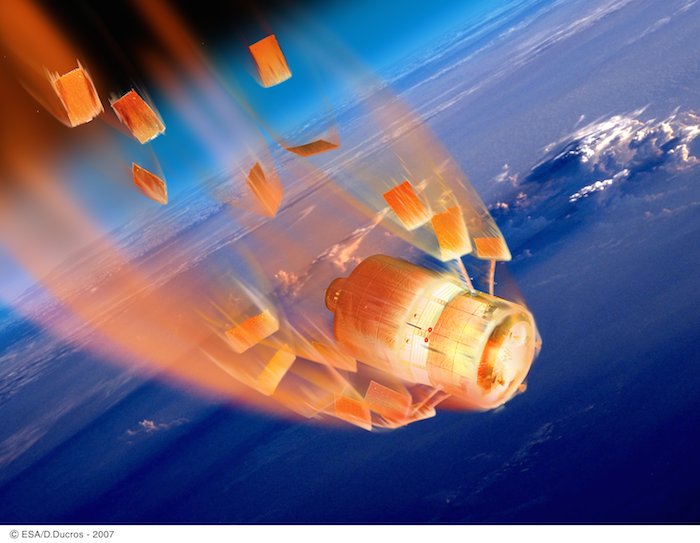
On Friday the 13th, an unlucky hunk of space junk called WT1190F will meet its end.
WT1190F was first spotted on February 18, 2013, but scientists suspect that it's been in orbit around Earth since 2009.
At around 1:20 pm ET, the space junk will collides with Earth and burn up in the atmosphere.
The point of re-entry will be over a patch of Indian Ocean about 62 miles off the coast of Sri Lanka.
Unfortunately, only residents of the southern province of Sri Lanka will have the chance to see the event.
However, the online observatory Slooh plans to get some of the first observations of the object on its approach toward Earth. And they'll be broadcasting the event live starting at 8 am ET. We've provided the livestream at the end of this post.
Though experts anticipate that WT1190F poses no threat — because most, if not all, of it will burn up in the atmosphere — the Sri Lankan government is taking precautions.
On Thursday, CBCNews reported that the government had imposed temporary no-fly zones and fishing bans near the re-entry point.
Here's a map of where the object is expected to be overhead from BPEarthWatch.com:
.
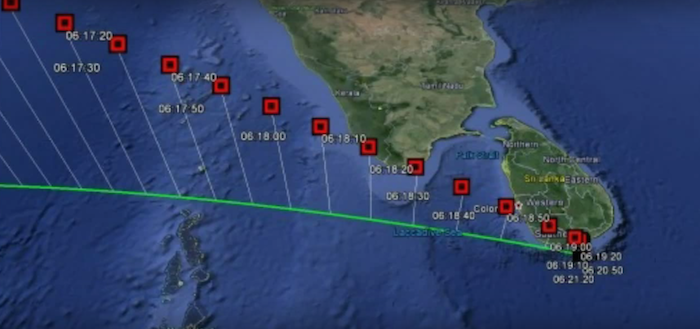
Though it is nearly impossible to know what WT1190F is, the European Space Agency suspects it could be a chunk of a fuel tank that once powered a rocket to space and was then discarded.
And when it returns to Earth's atmosphere, it could be a pretty spectacular show, according to observational astronomer for Lowell Observatory, Nicholas Moskovitz.
"Unfortunately, [the event] is right around mid-day, which means the sun is going to be up, but the object is probably going to get as bright as the full moon," Moskovitz told Business Insider. "So, if you're looking in the right location ... you could probably see it."
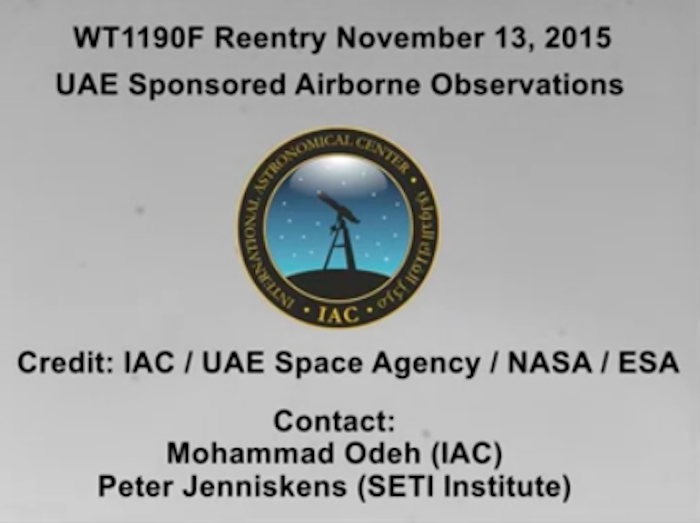
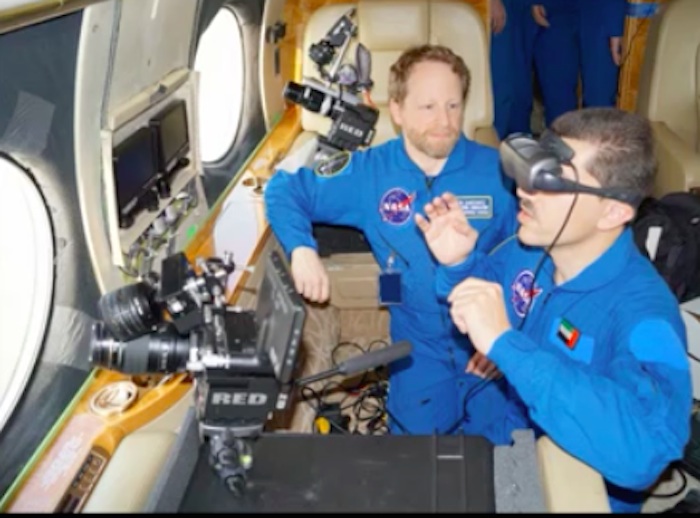
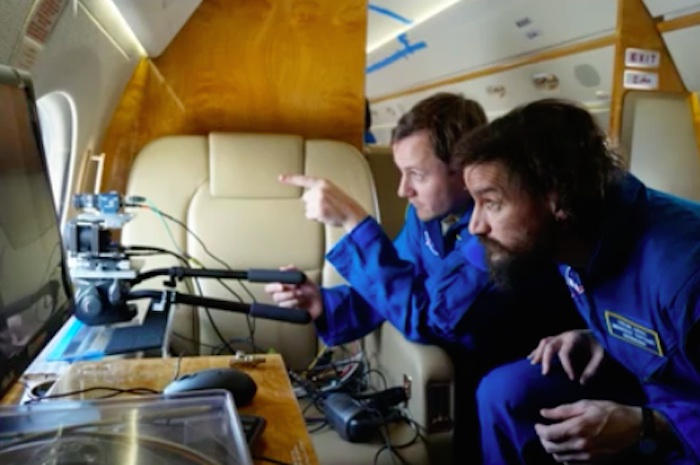
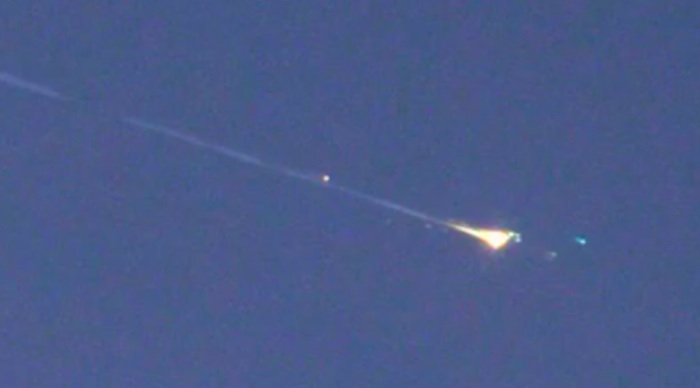
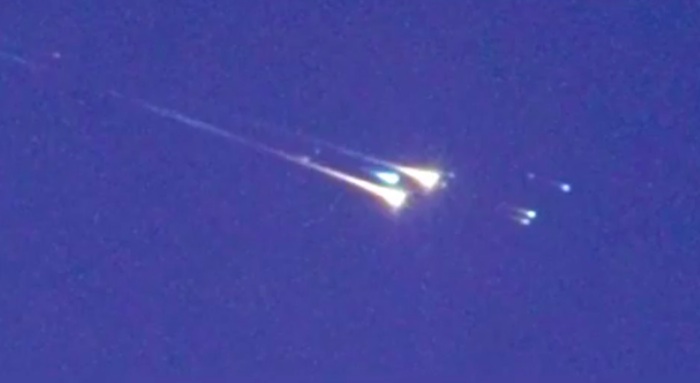
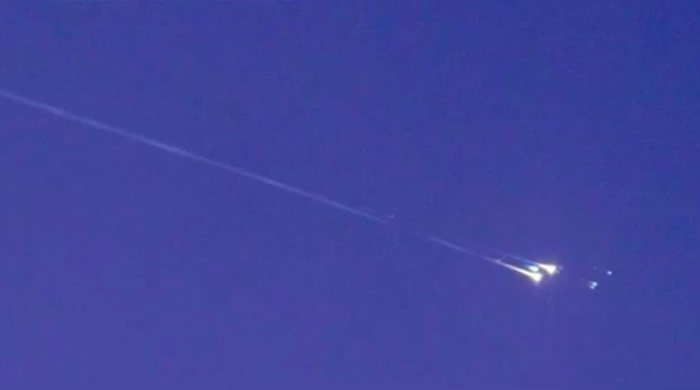

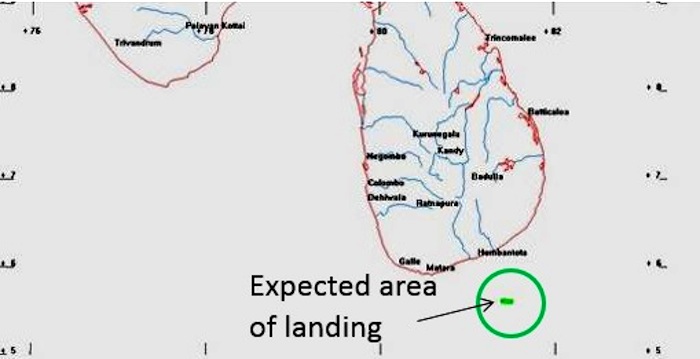

Even if it's difficult to see with the naked eye, scientists will have a number of instruments pointed at the object as it breaks apart in our atmosphere.
This is the first time that experts have calculated the exact time and location a piece of space junk will collide with Earth.
Scientists hope to use their observations to improve predictive models of how objects interact with Earth's atmosphere, which is important for establishing danger zones if, say, a large asteroid were to strike over a highly populated area at some point in the unforeseen future.
Slooh's broadcast will feature Slooh host Paul Cox and impact specialist Dr. Mark Boslough who will discuss the importance of WT1190F. If you have questions, you can ask on Twitter using #Slooh in your tweet.
Don't forget to check out the event, starting at 8 am ET on Friday the 13th below:
#WTF Space Junk Crash Landing on Friday the 13th
Event starts Fri, Nov 13 2015 2:00 PM CET
-
Quelle: BS
---
Update: 16.25 MEZ
.
Die ersten Aufnahmen von WT1190F Re-Entry:



...



Quelle: YouTube
-
Update: 15.11.2015
.
The space debris named as 'WT1190F' had exploded at the time it entered the Earth's atmosphere yesterday (13th Nov) according to the Mr. Chinthana Wijayawardana, Deputy Director (Media), Arthur C Clarke Institute for Modern Technologies.
It had exploded about 100 km above the sea level and the falling space debris, which blasted during re-entry, had burned off and no remains of it had splashed into the sea.
.


Quelle: Ministry of Defence - Democratic Socialist Republic of Sri Lanka
-
Update: 14.01.2015
.
Falling space debris traced to 1998 lunar mission
Researchers tentatively identify an object that fell near Sri Lanka in November.
.

A rocket motor that propelled NASA's Lunar Prospector toward the Moon in 1998 is likely to have fallen into the Indian Ocean in November.
-
The piece of space junk that made a fiery plunge into the Indian Ocean two months ago was most likely the remains of a rocket motor that propelled a NASA probe to the Moon in 1998, researchers studying the event have concluded.
The junk’s identity is by no means certain, but the “leading candidate” is the translunar injection module of Lunar Prospector, says Paul Chodas, an asteroid tracker at NASA’s Jet Propulsion Laboratory in Pasadena, California. The module nudged the probe out of Earth orbit and then detached from the main spacecraft, which orbited the Moon for 19 months before it was deliberately slammed into the lunar south pole in July 1999.
Speculation about the source of the debris, known as WT1190F, ran rampant even before it plummeted through the atmosphere on 13 November. The only artificial object to make an uncontrolled re-entry at a precisely predicted place and moment, it presented a unique chance to witness such an event in real time. Researchers took advantage of the opportunity, monitoring the debris from a chartered jet as well as from ground-based observatories.
Telescopes had occasionally spotted the object in orbit since 2009, although no one realized until 2015 that the junk would strike Earth. By combining the series of sightings, researchers constructed WT1190F’s elliptical trajectory around Earth and beyond the Moon’s orbit. That path bears the “signature of something launched to the Moon”, Chodas says.
Unique characteristics
Researchers think that they can eliminate many lunar missions as sources of the debris. Any object travelling on WT1190F’s estimated course for much longer than a decade would probably have hit Earth or swerved into a solar orbit, says independent astronomy-software developer Bill Gray, also part of the re-entry team. So it is unlikely that the debris came from an Apollo mission or one of the other early Moon shots.
Many of the rocket segments used in more recent missions can also be ruled out because they ended up in orbit around the Sun rather than the Earth, says astrophysicist Jonathan McDowell of the Harvard-Smithsonian Center for Astrophysics in Cambridge, Massachusetts, who has done his own analysis of the re-entry object. Other candidates can be ruled out because when observed in orbit, they haven’t matched WT1190F’s furious spin rate of 40 revolutions per minute.
Observations collected by the airborne team on 13 November also point to Lunar Prospector. The spectra of one large fragment of WT1190F include signals of titanium oxide and hydrogen, says astronomer Peter Jenniskens of the SETI Institute in Mountain View, California, who presented the observations on 5 January at a meeting of the American Institute of Aeronautics and Astronautics in San Diego, California. So the object could have been a titanium-walled vessel containing residual fuel, he says, although he declines to speculate about its identity. Lunar Prospector’s translunar injection module had a titanium case, whereas a similar module on another leading candidate, Japan’s Nozomi Mars probe, had a case made from carbon fibre.
Back in time
Additional support for the Lunar Prospector theory could come from archival searches to uncover sightings of WT1190F that pre-date 2009. If the debris’ orbit can be traced back further in time, researchers can compare the junk’s early travels with the path of Lunar Prospector to see how well they match.
Getting more data would require good luck, but this re-entry has a charmed track record. The airborne observers monitored two chunks of debris down to an altitude of 33 kilometres before the objects disappeared from sight, which implies that they survived intact all the way to the surface.
Orbital-debris specialist Patrick Seitzer of the University of Michigan in Ann Arbor notes that the re-entry site was fortuitous. “We’re lucky that this went into the ocean and not onto the ground, where it could’ve injured someone — or worse.”
Quelle: nature
4812 Views
